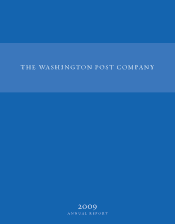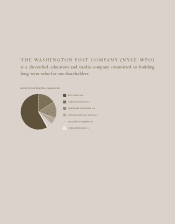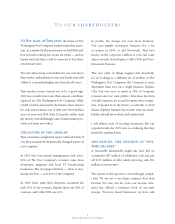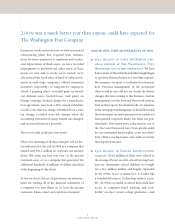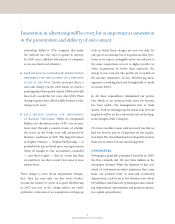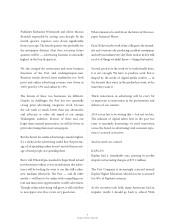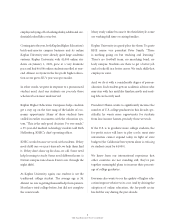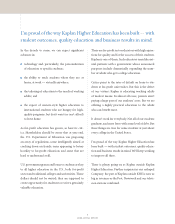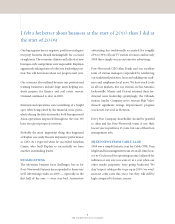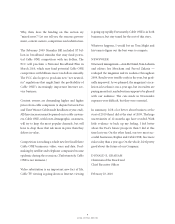Washington Post 2009 Annual Report Download - page 5
Download and view the complete annual report
Please find page 5 of the 2009 Washington Post annual report below. You can navigate through the pages in the report by either clicking on the pages listed below, or by using the keyword search tool below to find specific information within the annual report.
3
2009 ANNUAL REPORT
businesses, stocks and real estate; we have announced
restructuring plans that required lease termina-
tions, severance payments to employees and acceler-
ated depreciation of fixed assets; we have recorded
impairments to goodwill and other assets of busi-
nesses we own and to stocks we’ve owned; we’ve
also reduced the book value of hard-to-value invest-
ments in early-stage companies, offered retirement
incentives (repeatedly) to long-service employees,
closed a printing plant, recorded gains in broad-
cast division assets, booked losses (and gains) on
foreign exchange, booked charges for a nonsolicita-
tion agreement, have had a 49% owned subsidiary
record a one-time tax charge, benefited from a state
tax change, recorded non-cash charges when the
accounting treatment of equity awards was changed,
and recovered insurance proceeds.
Those were only in the past four years!
What’s the meaning of all those charges? Are we bet-
ter understood at the end of 2009 as a company that
earned only $91.2 million in corporate net income,
down 78% from our best year ever (as the income
statement says), or as a company that generated the
additional hundreds of millions of dollars described
at the beginning of this letter?
At the very least, this set of questions is an advertise-
ment for reading all of the financial statements of
a company you own shares in (at least the income
statement, balance sheet and cash flow statement).
MAJOR ONE-TIME ADJUSTMENTS OF 2009
n $64.5 million in early retirement pro-
gram expense at The Washington Post,
Newsweek and other operations. We have
had so many of these that shareholders might begin
to question their inclusion as a one-time expense.
My summary: we spent (or will spend) real money
here. Previous management of the newspaper
(that would be me) did not see clearly the drastic
changes that were coming to this business. Current
management (see the Post and Newsweek sections
later in this report) has dramatically cut expenses
at the newspaper and magazine. It should be noted
that retirement-incentive payments were made not
from general corporate funds, but from our pen-
sion fund. (Over many years, reductions in cost at
the Post and Newsweek have been greatly aided
by our overfunded pension plan, a rare asset these
days.) That’s one big reason cash results are better
than reported income.
n $33.2 million in Kaplan restructuring
charges. $24.9 million of these were related to
the closing of Score, an after-school tutoring busi-
ness for elementary school children we bought
for a few million dollars and hugely expanded
in the 1990s. Score is instructive: it looked like
a wonderful business. Technology made it possi-
ble. (In 1994, a roomful of school kids could have
access to computer-based teaching and won-
derful “coaches,” recent college graduates.) And
2009

